Rolls-Royce has secured a contract to supply advanced propulsion and handling systems for the first three ships in Canada’s River-class destroyer programme, part of the country’s multi-billion-dollar National Shipbuilding Strategy.
According to the company, the Royal Canadian Navy’s new ships will be equipped with the MT30 marine gas turbine, the Mission Bay Handling System, and mtu Series 4000 diesel generators.
Rolls-Royce will work in partnership with Irving Shipbuilding, the prime contractor for the project, with some equipment supplied via the Canadian licensee Wajax Power Systems.
“We are both proud and excited to support the newest surface programme of the Royal Canadian Navy,” said Bruce Lennie, Rolls-Royce Vice President of Government Relations. “Our expertise in power, propulsion and specialised handling systems will bring critical capabilities to the RCD and help significantly enhance Canada’s maritime defence.”
The River-class destroyers—formerly known as the Canadian Surface Combatants—are based on the BAE Systems Type 26 design, already selected by the UK and Australia for their own frigate programmes. Rolls-Royce is also supplying the same core systems to those fleets, creating logistical and operational efficiencies across allied navies.
Production of Batch One began in April, with the overall programme aiming for up to fifteen vessels. These are the largest and most complex warships Canada has committed to build since the Second World War.
The MT30 is already in service with several allied navies, including the Royal Navy’s Queen Elizabeth-class carriers and the U.S. Navy’s Zumwalt-class destroyers. Rolls-Royce claims the system delivers superior power density and is a key enabler of integrated electric propulsion architectures.
Lee Fromson of Irving Shipbuilding commented: “We are pleased to work closely with Rolls-Royce, benefiting from the company’s extensive experience and high-quality products as we deliver world-class ships for the Royal Canadian Navy.”



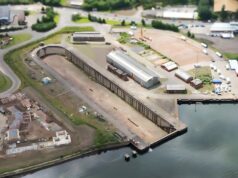
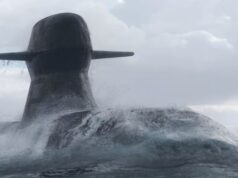
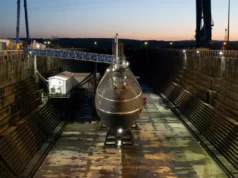
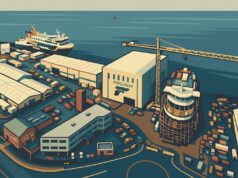
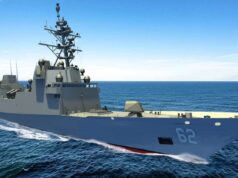
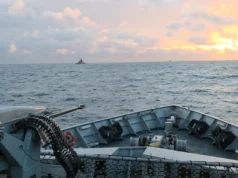


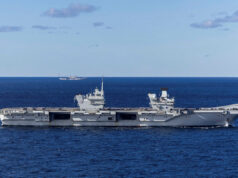
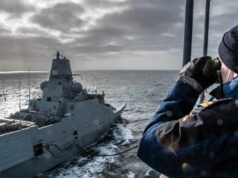

I do wonder if the Canadians will commit to all 15 River class destroyers, It’s a sizeable investment, particularly in view of the plan to increase their submarine fleet to 12 units. Perhaps they will scale the order back and top up the balance with a lower cost asset, like the T31.s
Keep in mind that Canada uses the life cycle cost estimate (LCCE) accounting method to come up with a figure for these destroyers. This method was used by the PBO (Parliamentary Budget Officer) to come up with the figure of $306 billion for all fifteen ships. However, the bulk of this estimated cost is the Operations and Sustainment Phase which is $219.8 billion. The RCN will likely operate these ships for fifty years or so and estimating operation and sustainment costs over the next half century is problematic. What will inflation be a year from now? A decade from now? Twenty-five years from now? What about new tech that will lower building costs? What about economic stressors that will increase costs? Inflation? Wage costs? A tariff war? You can’t accurately come up with a figure for annual life cycle costs beyond the next five to ten years, in my opinion. You can use data from the operation of the Halifax-class frigates and then use regression analysis but there are so many unknown variables that a cost estimate for operations and sustainment of the River-class destroyers becomes more of a guess than anything else. Also, the cost of building each ship will likely fall as expertise and experience comes into play. Finally, building these destroyers is a cornerstone of the National Shipbuilding Strategy (NSS) which both the Liberals and the Conservatives have committed themselves to.
As for the subs, my guess – and it is just a guess – is that the number will be cut to eight or ten simply because we’ve had problems sustaining operations with four boats let alone twelve; the CAF in general has a serious recruitment/retention problem. Surface ships are better for showing the flag, making diplomatic calls to foreign ports, etc. so if the fiscal fit hits the shan I think the destroyers will get priority.
Just my 2¢ worth.
cheers Richard – really interesting insights
Canadian whole life costs are meaningless to us. They certainly can’t be used to compare shipbuilding costs in different countries.
Lumping everything together in one number is only helpful for a particular decision (and it needs to be done correctly), whereas other decisions need a different number. To decide “how many” rather than “whether”, we might want to know the unit cost without design or tooling costs added in. However, quoting unit costs caused poor decision making on the Type 26. Whole life costs are better indicators when given in this year’s money, without inflationary or growth estimates added in. You want to use those to make sure that you are giving due weight to future maintenance and operations costs when buying equipment. They shouldn’t be used to decide whether or not we’ll buy a capability, but to decide between which variant. We create budgets for a future year in that year’s estimated values, which when misused puts artificial black holes into the equipment plan, creates massive misunderstandings in Parliament, and has politicians lying about how much extra they’ll spend on Defence by the end of the decade. Adding together (or subtracting) inflated numbers of multiple years gives a meaningless total.
To make decisions we really need more than one number. When comparing year on year or when summing up across years they need to be quoted in a particular year’s pounds and presented in a consistent manner. Unfortunately it seems ministers value soundbites over clarity.
Canada had problems maintaining a sub force due to staffing and maintenance for the Victoria class which are high maintenance. Canada does need all 12x Subs and also needs all 15x Rivers and all 12x Kingston class replaced with patrol corvette/minesweeper.
Things will be quite different with the new subs with the supply maintenance contracts that the DOD will have as requirement to whatever vendor gets the contract.
As for staffing, Canada like other western countries are doing something about that with expanded wage, benefit etc
Canada can afford this. Political will in the past is what has cut defence over the decades. That’s changed as Canadians are firmly behind expanded support for defence funding in the last two years.
I did think about that too. Especially in light of Babcock’s shipbuilding chief stating he wanted 31 by 2031.
Canada is a wealthy, large and powerful country, I think they can afford 15 aegis equipped type 26s. What’s going to be interesting is whether a supplementary order is going to become necessary as their Halifax class are beginning to experience the same problems as the RNs type 23s. Namely worn out and having to continue in service well passed their intended out of service dates.
An order for 5-10 type 31s might be just what they need.
At least 6 of them need to go to at least 64 vls, preferably 96 vls. The ships as currently configured are frigates, not destroyers.
Well gosh there’s a surprise Canada hasn’t decided to change from what is probably the best GT / DG combo in the world at present to something else which would cost a fortune to re-engineer and same with the Mission Bay handling system. As for the numbers I seriously doubt the Canadians are daft enough to cut the numbers, they are one of the lowest spending members of NATO and need to do more. The high North is shaping up to be a very important area of the world and Canada has to defend their share of it.
And given just how convoluted getting any major defence project up and running in Canada is, I just can’t see them cancelling any of these ships.
As for the submarines they can pretty well afford to buy what ever they want as long as it isn’t nuclear (last time they tried that Uncle Sam nixed it). The dream would be to let them join in the AUKUS project but I just don’t see that happening and not just due to the US dimension, industrial capacity would be a huge issue. Getting one country up and running with a Naval Nuclear Submarine force is a challenge, two would probably break the knicker elastic.
So it will be the usual suspects of France, Germany and Sweden plus the newbies of Japan, S Korea and Spain.
If I were a betting man I’d bet a down-select to France, Japan and Spain ! Interesting times we live in.
Generally agree w/ your assessment, although there may be an opportunity for Canada to join AUKUS, during a post Trump era, especially if/when programme success demonstrated. There is a definite possibility Canadian defence expenditure will reach 3.5% of GDP by 2032. That budget delta will permit some revision of current plans.
Prime Minister Carney stated during the recent federal election that the Liberals will reach 2% of GDP on defence by 2030. 3.5% of GDP on the military is not politically feasible in Canada at this time, especially in such a short time frame.
Umm…er…interesting, multiple sources, including the NATO Sec. Gen., have stated a proposed, revised goal for direct defence expenditures of 3.5% of GDP by 2032. Presumably budgetary goal issue will be resolved by 25 June 25. Canada may encounter interesting choices post 2030.
Both PM Mark Carney and MND David McGuinty have made it clear that Canada will set its own spending goals. This should not be that “interesting” given that we are a sovereign nation and we don’t take orders from Brussels or Washington.
Mark Carney wants Canada to join the UK\EU rearm project which I think will likely happen.
This involvement can push defence investment for Canada up quite a bit for its share of % to GDP defence spending.
Carney is also planning on rekindling and encouraging domestic defence infrastructure in Canada. Remains to be seen how this goes but looks promising.
Hi M8 there are 3 prime reasons I don’t think Canada will go with AUKUS and any one of them is a dealbreaker.
1. The cost of starting a Naval Nuclear Submarine Industry from scratch would be off the scale and to be honest Canada doesn’t really need to go Nuclear a large modern AIP would do quite nicely.
2. With the USN wanting to build its Battle force up to 64 boats and with the U.K having to supply more components for the Australian SSN(A) on top of our own there just isn’t any capacity.
3. There are 2 resources that are finite one is Crews and the second is HEU to fuel them, the first is a challenge the second is a massive issue and is already a pinch point for present plans.
ABCR … Remember that AUKUS is not only about submarines, Pillar II is embodies Advanced Capabilities in other technological areas: undersea capabilities, quantum technologies, artificial intelligence and autonomy, advanced cyber, hypersonic and counter-hypersonic capabilities, electronic warfare, innovation and information sharing.
The Japanese Embassy in Ottawa stated last November that no Japanese companies would respond to Canada’s RFI for submarines.
Canada wants a submarine that’s already in service and that leaves the Korean KSS-III (Batch II) as the only option. South Korean political, industrial, and military leaders have been courting Canada with subs, SP howitzers, and lots of goodies; they’re offering Canada a new military relationship rather than just new subs. Also, the Commander of the RCN has visited Hanwha Ocean’s shipyard at least once and Prime Minister Trudeau discussed submarines with the ROK president earlier this year.
Put your money on South Korea.
The Japanese AiP subs are supposed to be exceptional. They offer a very high end capability and would prove really effective.
Alternatively Canada could go nuclear and jump on Aukus. I’m sure BAE systems in Barrow would love to build them a force of SSNrs.
CANAUKUS.
Or AUKCANUS- bit unwieldy isnt it? – because Canada’s inclusions makes the abbreviation difficult that settles it, we cannot allow Canada to join AUKUS.
Or Can Us ?
Canada already has a strong nuclear industry. 15 civilian nuclear reactors and their own fuel sources. In my opinion they need nuclear subs to have that artic capability 365 days of the year. They were going to build their own in 87. The UK government should make the offer. Trump won’t intervene. He will just claim it’s all down to him.
Would be great if Canada went for the SSNr and joined Australia and UK in operating the very best nuclear subs.
An ideal world scenario.
ABCR,
Defer to your knowledge and experience in this arena. Agree that a large, modern AIP SSK would be sufficient for the Canadians, provided their limited operational aspirations in the E-A, and especially in the I-P theaters. In regard to HEU constraints, thought that HALEU tech would prove more beneficial to HEU stockpile development and be further along the development curve.
Magenta (below) correctly states that AUKUS Pillar Ii participation could prove to be a fruitful (consolation) prize for the Canadians.
Strong in Fusion too, with two novel fusion projects in progress.
Mmm the Canadian Civilian Nuclear industry has very little cross over potential to provide a Submarine Nuclear reactor, they use a completely different approach.
Deuterium moderated non enriched Uranium vs Water cooled weapons grade HEU complete opposites.
Yes it could technically be done (it took us 20 years) but you are talking about starting practically from scratch and if you use HEU that would have to include the enrichment process and a small matter of violating the NPT.
FYI the Canadians went down the SSN Rabbit hole twice before (1959 and 1987), the UK was all for supplying them. However the US exercised its veto and slammed both proposals into the ground. They do not want Canada having Nuclear subs and have a veto in Treaties with both U.K. and Canada.
I don’t know what they’d say about a French option but they use LEU so it could be an option provided the US agrees.
Even if Canada was interested in SSNs wouldn’t Canada use the same RR PW3 or derivative that the UK and Australia will use, why design their own?
Wasn’t the mission handling system actually designed by RR in Canada?
Rolls Royce Naval Handling Systems designed and build these and lots of other systems in Ontario ! “We are the RR we will assimilate you and add you to our collective” but our hearts still here in Derby 😎
Politically a French sub is a non-starter IMO. As Canada’s least loyal province, Quebec should have no pointy-end naval construction, something that would likely happen with a French acquisition. I doubt Japan is really interested and Canada would to be better of exploring GCAP to appease Japan as I suspect SKorea is the likely choice. KSS3-Batch2 seems to meet all the RCN’s needs and SKorea has proposed setting up Canadian support facilities on on both coasts.
At this point in time Alberta seems to be Canada’s “least loyal” province. But you knew that, didn’t you.
There was a poll recently which revealed that the majority of francophone Québeckers feel a stronger attachment to anglophone Canadians and Americans than they do to the French; not surprising since Québeckers are North Americans not Europeans.
Canada is a federation of regions, political powers ebb and flow between Ottawa and the provinces, it’s always been that way. I have an old friend who lives in a town in the Eastern Townships and she refers to us Anglo-Canadians as her “weird cousins” and she does it with a smile and a poke in the ribs. She admits that she votes for the Bloc but she doesn’t want independence, just more power for the province. Ebb and flow…
I know Québeckers who are proud Canadians and I know the majority of Albertans are proud Canadians too. There will always be a minority who want to separate but then the same could be said of Scotland or the Basque region. Would you withhold military contracts to punish “least loyal” Scotland? Seems counterproductive, doesn’t it.
Speaking of Québec shipyards let’s not forget Chantier Davie which has just been awarded a contract to build a Polar Max icebreaker for the CCG. It’s part of the Icebreaker Collaboration Effort (a.k.a. the ICE Pact) that Canada recently signed with the US and Finland. Davie has also been involved in ongoing upgrades of the Halifax-class frigates.